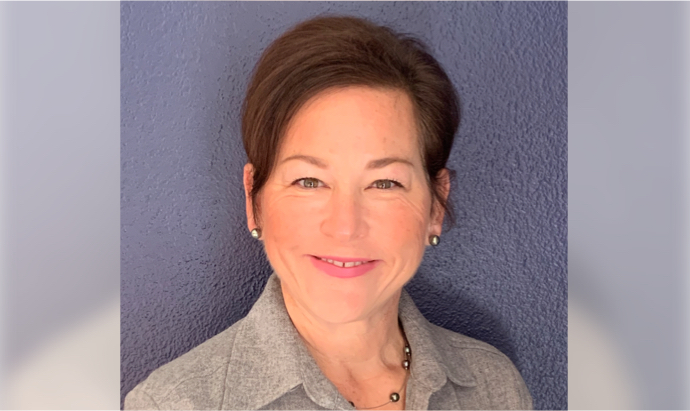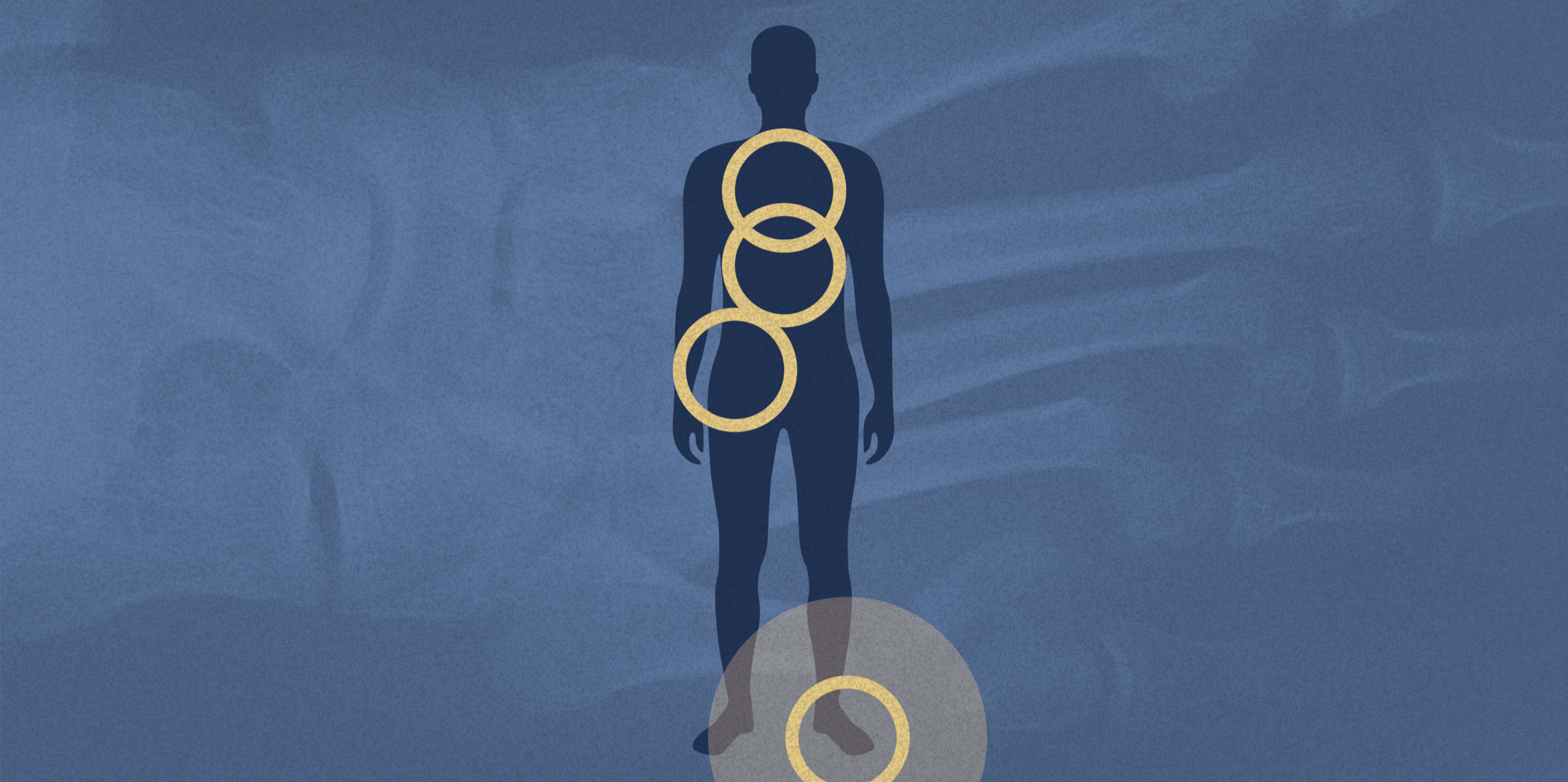Summary
After a patient in his early 30s develops muscle weakness so severe he requires a wheelchair, he’s diagnosed with multiple sclerosis, and starts treatment for the disease.
Guest

Suzanne Jan de Beur, MD, Endocrinology
Suzanne Jan de Beur, M.D., is an associate professor of medicine at The Johns Hopkins University School of Medicine and the Director of the Clinical Research Unit Network of the Johns Hopkins Institute for Clinical and Translational Research. She received her B.A. and her M.D. degree from Cornell University. She completed the Osler Medical Residency at the Johns Hopkins Hospital and her fellowship in Endocrinology and Metabolism at the Johns Hopkins University School of Medicine. As a Physician-Scientist and a practicing Endocrinologist, her clinical and research work focus on understanding rare and metabolic bone diseases at the basic level and translating these observations to the bedside. She is an internationally recognized expert in metabolic bone disease and is frequently invited to speak internationally on skeletal health. Dr. Jan de Beur is leader in several professional organizations and is currently President of the American Society of Bone and Mineral Research. She serves as the Associate Editor of JBMR Plus, Primer on Metabolic Bone Disease and Disorders of Mineral MetabolismandCurrent Osteoporosis Reports. Dr. Jan de Beur’s work has been published in high-impact journals including New England Journal of Medicine, Journal of the American Medical Association, Journal of Clinical Investigation and The Lancet.
Transcript
DDx SEASON 3, EPISODE 4
Hunting for a diagnosis
RAJ:
This season of DDx is brought to you by Ultragenyx Pharmaceutical Corporation.
RAJ:
A 34 year old man presents with weakness. And he’s been getting progressively worse…to the point of needing a walker to get around, and finally, a wheelchair. Then, his bones began breaking…This is DDx, a podcast from Figure 1 about how doctors think. This season is all about rare diseases. I’m Dr. Raj Bhardwaj. Today’s case comes from Dr. Suzanne Jan de Beur [JOHN de burr], who we heard from in episode one of this season.
Dr. Jan de Beur:
I am a metabolic bone physician. I’m at Johns Hopkins University School of Medicine where I’m an associate professor of medicine.
RAJ:
Dr. Jan de Buer wasn’t the first doctor who had cared for this previously active, healthy man.
Dr. Jan de Beur:
It had begun about five years before I saw him. (00:27) He was doing great in his career, career was going great guns, doing all things people on their 30s do; traveling, going out, having fun, then he began to feel unwell and it started with little bit at first and he just thought, “Well, maybe it’s stress. (01:07) So he began to see a number of doctors, and he went from doctor to doctor complaining of weakness, complaining of pain, and he’s beginning to have pain in his bones at this point. And they would test him, and they could demonstrate, “Yes, there’s demonstrable muscle weakness here,” to this point he’s even walking with a cane sometimes. (01:33) getting so weak to the point where he was diagnosed with multiple sclerosis, and actually started on multiple sclerosis treatment. Despite this treatment still doing poorly.
RAJ:
Multiple Sclerosis is on the Differential Diagnosis for progressive weakness in a previously healthy man, but when he started having unexplained fractures, the DDx needed rethinking.
Dr. Jan de Beur:
And that’s when the story changed when it was just from weakness to now having bone involvement and having fractures of his long bones. And now, people began to decipher, this is not multiple sclerosis, 30 year olds do not fracture their hips with multiple sclerosis. And then they did a bone scan and found out that he had multiple fractures, he had fractures in his spine, he had fractures in his feet, he had fractures in his ribs, in fact, he had 11 fractures.
RAJ:
At this point, before seeing Dr. Jan de Beur, a different bone specialist diagnosed the patient with osteomalacia. He saw that the patient’s phosphorus and vitamin D were low. Once he was on phosphorus and vitamin D, things began to stabilize. But it still didn’t make sense that such a young man would have such significant osteomalacia. This is when he was sent to see Dr. Jan de Beur.
Dr. Jan de Beur:
he comes with a low serum phosphorus, his vitamin D level has been repleted, but his 125 hydroxy vitamin D which is the active form of vitamin D is inappropriately low. They’ve also measured his urine calcium and his urine phosphorous, and his urine phosphorus is inappropriately high, meaning that he’s not reabsorbing phosphorus to the degree we’d expect him to reabsorb phosphorus in the face of this severe hypophosphatemia. So I’m thinking, “Okay, we have acquired hypophosphatemia because he was fine until five years ago, he has muscle weakness, he has fractures, he has a biochemical profile it looks indicative of something we call, tumor-induced osteomalacia.”
RAJ:
Or TIO. Where small tumors make a hormone called FGF 23, and this hormone is then secreted into the blood and causes the kidney to start to lose phosphorous despite the blood phosphorous being low. And the body has trouble making the active form of vitamin D, which is a way that you can increase your phosphorus by absorbing it at the gut.
Dr. Jan de Beur:
So I decide, well, the most common, not the most common, the cause of this are these mesenchymal tumors. They’re frequently small, but I need to do an examination to see if I can find any lumps, or bumps, or something that could help me make the diagnosis here in the clinic. (05:48) So I’m palpating his head, the most common places for these tumors are in the distal extremities, but also in the sinuses, in the oral cavity. So I’m feeling his jaw, I’m palpating in his oral cavity, I’m palpating in his neck. I’m just palpating all his glands that I can. I’m feeling his distal extremities, and I get down to his feet and he’s like, “My right foot has been kind of hurting,” so I’m palpating his feet and he does have pain there.
RAJ:
Dr. Jan de Beur sends the patient for an MRI of his right foot.
Dr. Jan de Beur:
and the MRI comes back negative. So at this point, I realized that physical examination is going to be very insensitive to finding these tumors so I send him for some functional imaging. And we know that mesenchymal tumors, not necessarily only those associated with tumor-induced osteomalacia but also those that aren’t associated, express somatostatin receptors, and there’s a number of imaging modalities that you can use that take advantage of these somatostatin receptors. And the one that I used was an octreotide scan. (07:38) and they called me from the radiology suite and said, “We sees an area of uptake in the foot,” I said, “Really?” He said, “The left foot.” It turns out that he had pain, which was plantar fasciitis, on his right foot, but then when we did an MRI of his left foot, there was a two centimeter mesenchymal tumor right at the base of the first metatarsal of his foot. And we were able to send him to surgery for a wide resection, it was removed and his biochemical abnormalities were reversed, and then he began to remineralize his bones.
RAJ:
The patient almost immediately begins to regain his strength. Dr. Jan de Beur calls it a “Lazarus” moment.
Dr. Jan de Beur:
I can’t overstate how devastating this disorder is. And the longer people go undiagnosed, the more they progress and it literally robs them of their life. And when you make the diagnosis and people are cured, you feel like you’re witnessing Lazarus, I’m not kidding. You feel like you flashbacked to six months before and you look forward six months after people have either had the tumor completely removed or start treatment, and you feel like you’re witnessing Lazarus because people go from in a wheelchair to walking. (08:21) He was able to return to work, and he sent me a postcard from his honeymoon in Jamaica telling me that, he was feeling great and just was thanking me for being a part of his journey, and really getting him back to his life. And so, it was really, really satisfying.
RAJ:
As satisfying as that is, TIO is almost always missed on the first encounter, because the presentation can be so enigmatic.
Dr. Jan de Beur:
A lot of times there’s not cooperating objective evidence on physical examination, and so I’ve had people being told that they were crazy, that nothing’s wrong with them. The other big reason is because, (10:04) One of its other hallmarks hypophosphatemia is not available on routine chemistry panels. You have to think to order it. So if you don’t think about it and you don’t order it, people can go years before you discover that they have significant hypophosphatemia. (10:22) So just like in my gentlemen situation, it’s often not until they begin to break bones that people really get on the right track. (10:42) where someone thinks about the phosphorus, orders the phosphorus, and starts down the trail to make the diagnosis.
RAJ:
So, are there any clues Dr. Jan de Beur can offer a primary care practitioner that what they’re dealing with is a zebra and not a horse?
Dr. Jan de Beur:
I think that if you see an elevated alkaline phosphatase on their chemistry panel, which a lot of people get chemistry panel, that can put you down the road that there’s something going on with this person’s bone. If you have the combination of bone pain and muscle weakness, again, that can tip you off. I think anybody that presents with complaints of muscle weakness, especially that starts in the distal lower extremities, or a lot of times people will have foot pain because they’re having microfractures of their metatarsal, that should tip you off.
RAJ:
There’s an old saying among investigative journalists: “follow the money.” In medicine, it could be “follow the pain.”
Dr. Jan de Beur:
sometimes you have to ask a couple of questions because people say, “I have pain.” You need to ask a question like, “Where’s the pain, is it pain in your joints, is it pain in your bones, does it feel like it’s in your muscles?” You really have to help hone in on the pain. So lower extremity pain, pain that starts in the feet and starts to descend up, pain that’s also accompanied with weakness or perceived weakness, these are all big things that I’d think would start to tip me off. Elevated alkaline phosphatase on chemistry panel, these are things that would make me think, “I need to order phosphorus,” and phosphorus is not expensive. It just takes awareness to think “Hmm, so I just have a low level of ordering a phosphorus.” I would say, if you ever think about, “Gee, this person could have low vitamin D,” especially if a presentation is a little bit vexing, I would also order a phosphorus with that.
RAJ:
But what if, like almost happened in the case Dr. Jan de Beur told us about, the tumor can’t be found?
Dr. Jan de Beur:
There’s a newer modality called a PET Dotatate scan that seems to have much better sensitivity and specificity. And there’s some literature suggesting that in about 80% or 85% of the time, we can find a tumor with that modality. So if we’re fortunate enough to be able to find the tumor, we remove it. Surgical resection, complete surgical resection is the treatment of choice because people will be cured. So we want to resect it, we want to find it, we want to make sure we get it all the first time. If unfortunately we can’t find it, there are medical therapies available and there’s a couple of medical therapies that are available. And a lot of times with medical therapy, we can at least reverse some of the disorder, and get people feeling better, get them more mobile, reverse their downward course. And then we continue to look for the tumor to try to find the tumor and then resect it because surgical resection is curative.
RAJ:
Thanks to Dr. Suzanne Jan de Beur for speaking with us. This is DDx, a podcast by Figure 1. Figure 1 is an app that lets doctors share clinical images and knowledge about difficult to diagnose cases. I’m Dr. Raj Bhardwaj, host and story editor of DDx. You can follow me on Twitter at Raj Bhardwaj. Head over to figure one dot com slash ddx, where you can find full show notes, photos and speaker bios. This episode was brought to you by Ultragenyx Pharmaceuticals Corporation. Thanks for listening.






